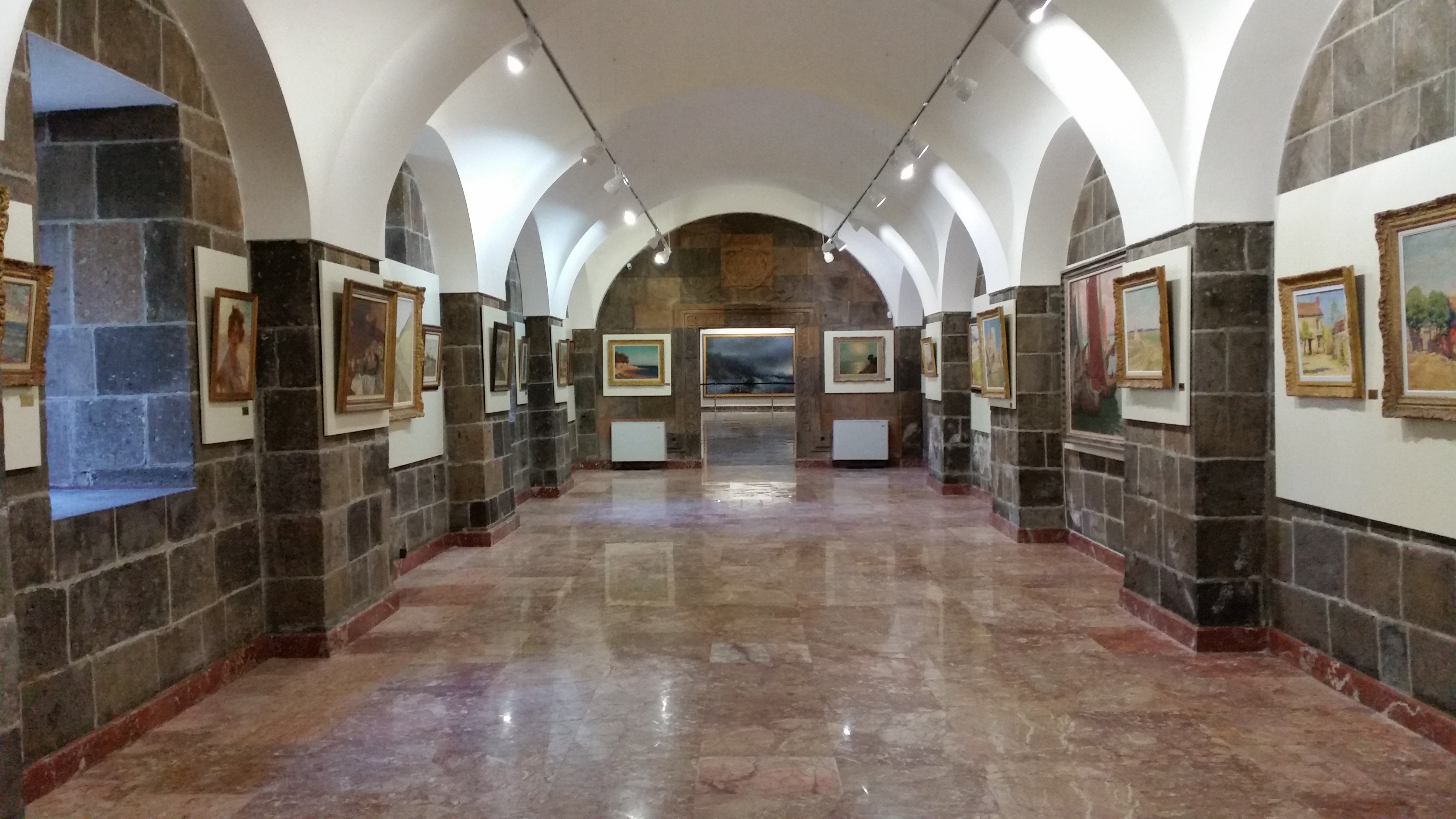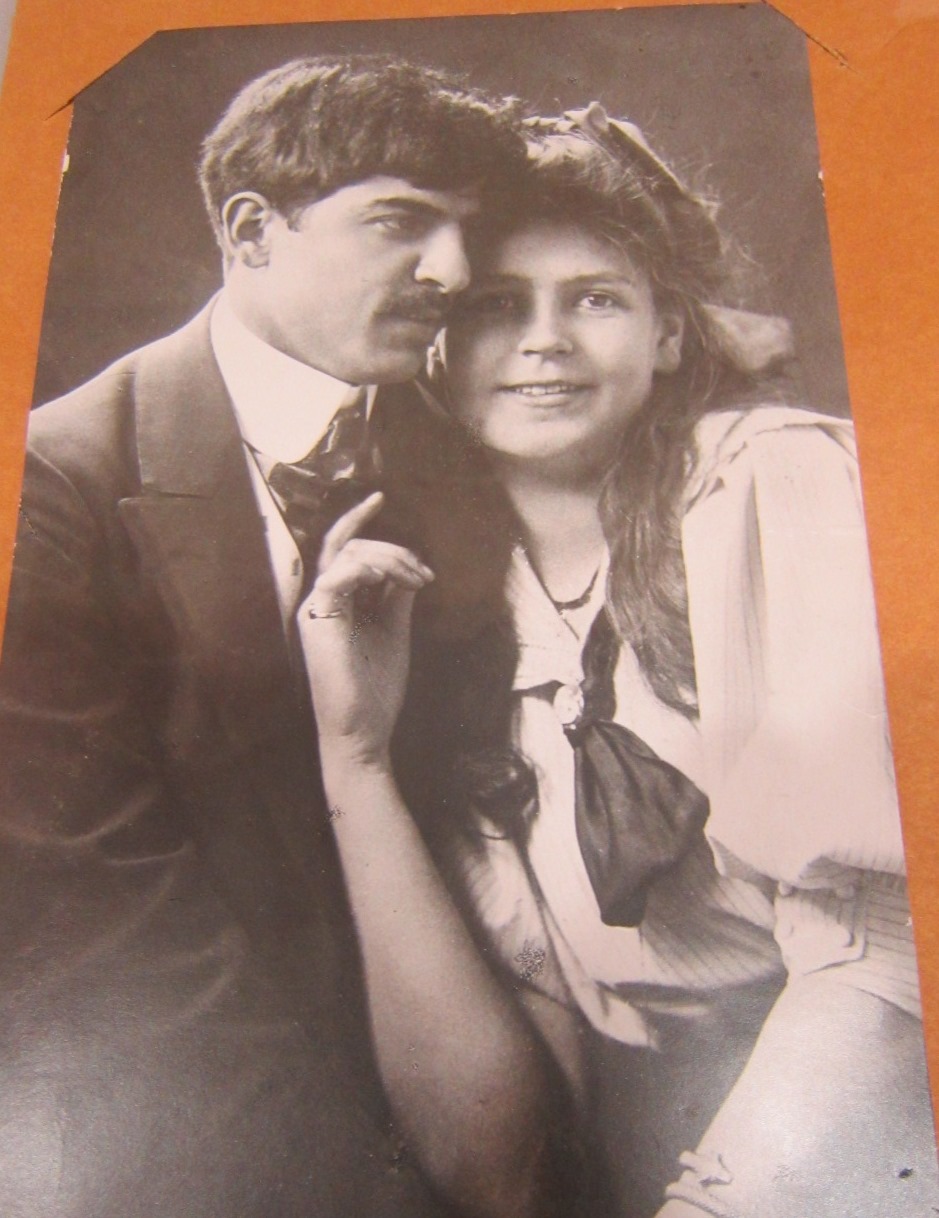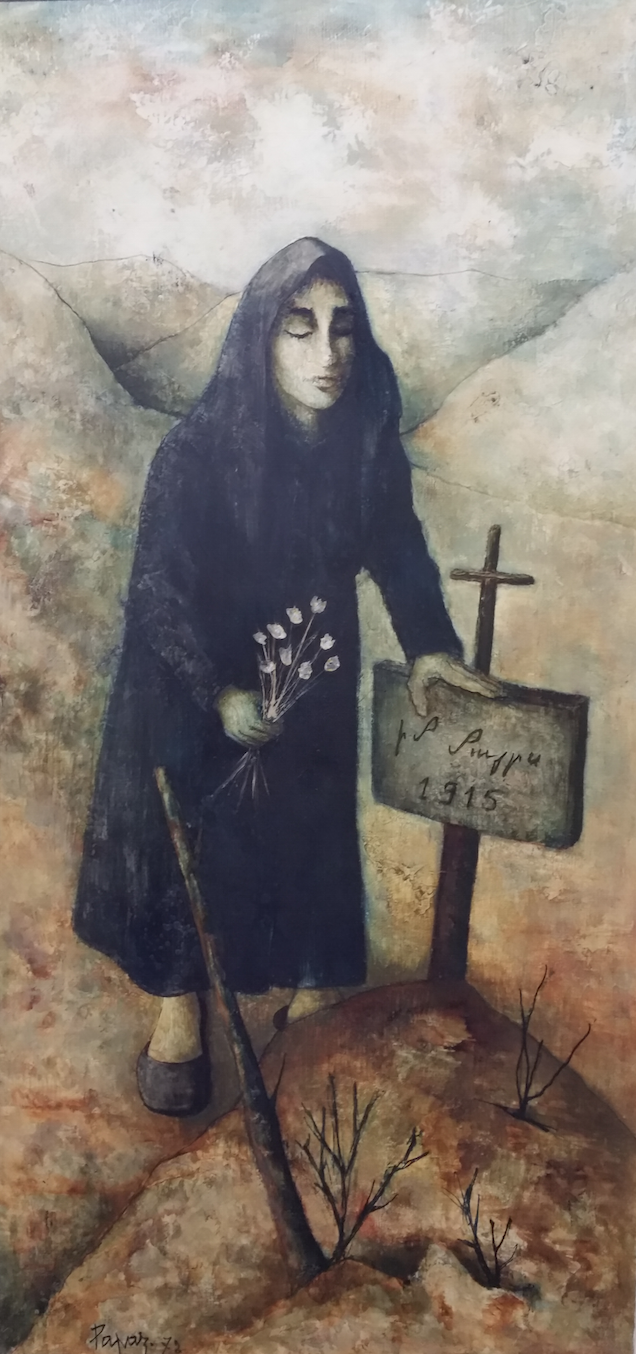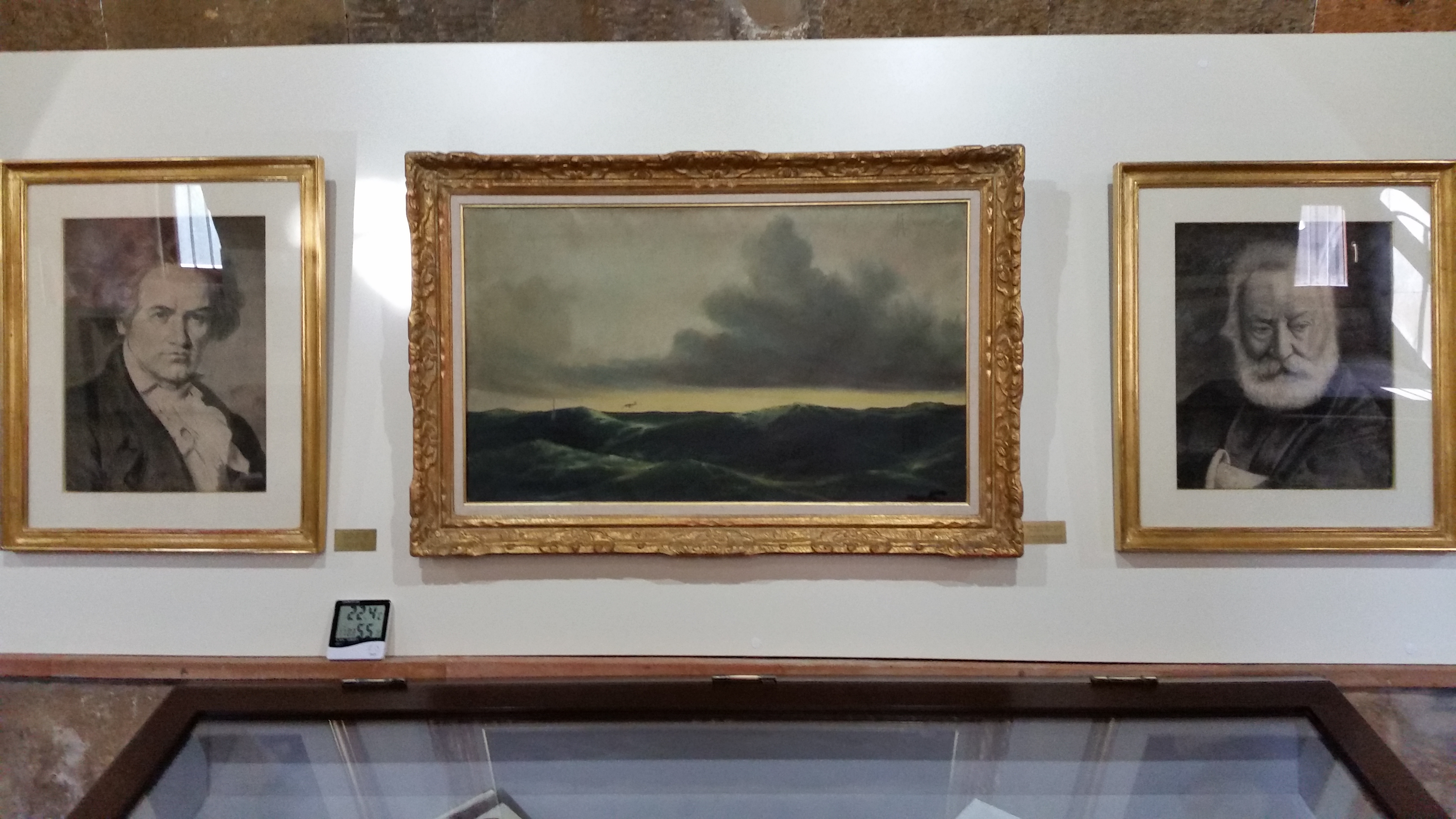
First Gallery - At far end is large Aivazovsky seascape.
Armenian News Network / Groong
January 11, 2015
Travel Wire
By Ruth Bedevian
The telegram read:
25 August 1915 - 8:25 AM Chankir, Istanbul - Pankalty Nalpant Street
To: Mrs. Chilingirian
`I WENT WITH VAROUJAN TO AYASH. SEND ME YOUR LETTERS THERE. ROUPEN.'
Two hours after the telegram was dispatched, Turkish soldiers removed Roupen Sevag and Daniel Varoujian and three others from the train near the village of Tuneh . They tied their victims to a tree and brutally butchered them according to a documented eyewitness account. During the 100 years since this heinous crime, Roupen Sevag has been mourned - as have all the victims who perished in the first genocide of the 20th century perpetrated by the Ottoman Empire. He was one of the youngest[1] intellectuals of the more than 250 that were marked for arrest and death on April 24, 1915 at the onset of the deportations and ultimate ethnic cleansing of Armenians from their ancestral land. Today he is abundantly memorialized in the Holy See of Etchmiadzin by the generosity of his brother's son, Hovhannes Chilingirian, age 93, who lives in France.

|
|
Ruben Sevag Museum, View from entrance: First Gallery - At far end is large Aivazovsky seascape. |

|
| Rouben and Yanni. |
Lusineh explained to me. `With the blessings of HH Karekin II, Catholicos of All Armenians, the former dining area for the clergy and seminarians was converted into a gallery. This building, known as Ghazarapat[2], has served the Holy See since 1740.'
The museum is divided into two halls. The first hall displays an impressive personal collection of nearly 200 paintings that Chilingirian amassed during his lifetime, including three Aivazovsky oils, the largest of which is entitled `Crimean War 1855' and lures the visitor's eye from the far end of the hall. Several works by two students of Aivazovsky - Vartan Makokian (1869-1937) and Arsene Chabanian (1864-1949) are also on display. We browsed through a varied selection of art. One touched me, most especially, of a woman standing with flowers in one hand and the other resting upon the tombstone above a grave. The inscription on the tombstone read, `Im Mayrigis (My Mother) 1915. The second hall contains the personal belongings of Sevag that have been salvaged and preserved in the family, including personal correspondence, photographs and Sevag's own artwork and sketches. I yearned to read the handwritten letters that Roupen wrote to his wife, Yanni. Lusineh told me that husband and wife communicated in French and the letters were quite romantic.

|
|
`Im Mayrs 1915 (My mother 1915) |
Roupen was gifted with artistic talent and a penchant for poetry; thus writing came to him as an avocation. He also dabbled with sketching and an oil seascape adorns a wall with two charcoal sketches flanking it, one of Beethoven and the other of Victor Hugo. Admiring both the musician and the writer he rendered good likenesses. Literary critics rank Sevag among the patriotic and humanist poets and believe had he been given longer life that he would have made even richer contributions to Armenian literature and might have created a new genre as his writing did not truly belong to any one literary school. His poetry is a view into Western Armenian literature and expresses its essence. As early as 1908 he was contributing regularly to popular Armenian periodicals of the times. He was well respected and his abhorrence toward injustice and appeal to world harmony resonated with his readers. In 1910 his first book was published, entitled, Garmir Kirk (The Red Book), stirred by the carnage that took place in Adana in 1909 when the Young Turks government massacred 30,000 Armenians.

|
|
Sketches and oil paintings by Rouben Sevag. |
The Ruben Sevag Museum is a gem among the museums of Armenia and is unique in that it is the first one devoted to a Western Armenian writer. Not only did I feel the spirit of young Roupen Sevag, but also the devotion of an uncle's love for his nephew. Hovhannes Chilingirian has made a magnanimous gift to the Armenian people of his dearly beloved possessions and has wisely placed them into the protective hands of the Holy See. Indeed, a legacy has been illuminated.
End notes:Much appreciation to Dr. Vartan Matiossian, historian, translator and editor, for his counsel and review.
- Younger than Sevag was poet Armen Dorian (pseudonym of Hrachia Surenian) who was 23 when he was arrested and killed in 1915.
- The name comes from its builder, Catholicos Ghazar Jahketsi (1737-1751). `Ghazarapat' means `walled [built] by Ghazar.'
References:
|
Redistribution of Groong articles, such as this one, to any other
media, including but not limited to other mailing lists and Usenet
bulletin boards, is strictly prohibited without prior written
consent from Groong's Administrator. © Copyright 2015 Armenian News Network/Groong. All Rights Reserved. |
|---|